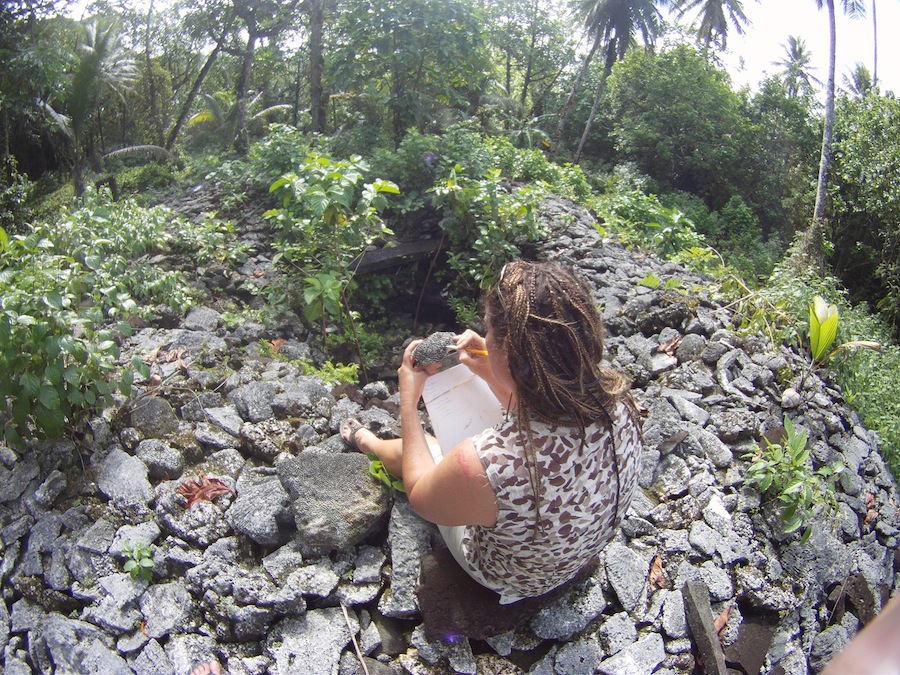Coral Pyramids in Micronesia Date Back to Middle Ages

On a remote Pacific island not much bigger than Manhattan, there are ancient pyramids built out of living coral. New evidence reveals that these tombs could be up to 700 years old — much older than experts had previously thought.
The royal tombs are tucked away in an artificially built ancient city called Leluh just off the mainland of Kosrae, a Micronesian island. Leluh was home to Kosraean high chiefs (as well as some lower chiefs and commoners, too) from about 1250 until the mid-1800s, when foreign whalers, traders and missionaries started to arrive on the island.
With impressive canals and walled compounds built from basalt, Leluh is often considered a companion city to the more famous Micronesian settlement of Nan Madol, on the nearby island of Pohnpei. While the tiny islets of Nan Madol were built on top of a coral reef, at Leluh, coral was actually incorporated into the construction material of many buildings, including the royal tombs. [8 of the World's Most Endangered Places]
"Today, the ancient tombs of the royal burial complexes are one of the few parts of the ancient Leluh site that remain intact," said Zoe Richards, a coral expert at the Western Australian Museum and lead author of a new study detailing the findings. "Much of the historical site is overgrown by the tropical forest and has succumbed to hundreds of years of tropical weather and tidal inundation, and some parts of the site have been dismantled and reused in modern construction."
These tombs, also known as saru, stand about 6.5 feet (2 meters) tall, and they're shaped like frustums (pyramids with their pointy tops lobbed off). Historical sources indicate that when a Kosraean king died, he would be rubbed with coconut oil and wrapped in mats and cords to be buried in the saru for up to three months. The king's bones would then be exhumed, cleaned and reburied in a hole on the nearby reef, Richards and her colleagues wrote.
Because these burials were not permanent, not much was left behind in the tombs to help archaeologists today determine the age of these structures. The bones of a 50-year-old man and a dog were found in one of the tombs, known as Inol-1, but a radiocarbon dating of those skeletal remains showed that this burial took place relatively recently, sometime between 1824 and 1850.
To get a more precise estimate of the age of the tombs, Richards and her colleagues turned to the building material itself. They collected 47 chunks of coral from three saru — Inol-1 and two others, named Lūrūn and Bat — and subjected these samples to uranium-thorium dating, a technique used to determine the age of calcium-carbonate materials like coral.
Get the world’s most fascinating discoveries delivered straight to your inbox.
The results showed that all three tombs could have been built as early as the 1300s, the researchers said.
"The results of this study lend support to oral histories and other archaeological work on Kosrae suggesting an earlier construction, occupation and use of Leluh," Richards told Live Science in an email. "It also better supports Leluh's place in the region, not only as a rival to Nan Madol on Pohnpei, but also as a hub of political and economic activity throughout this part of the Pacific."
Some of the corals actually dated back thousands of years, which means that the people of Leluh were using coral fossils and rubble to fill out the tombs' walls and line the crypts, the researchers said. However, Richards and her colleagues think most of the corals used in the tombs' construction were plucked from live reefs surrounding Kosrae at low tide.
"To extract and translocate the amount of coral used to build the saru, as well as the structures and walls throughout Leluh, would have required a highly structured social order that could organize and demand significant labor and logistical support from the population," Richards said.
The findings were published today (March 13) in the journal Science Advances.
Follow Megan Gannon on Twitter. Follow us @livescience, Facebook & Google+. Original article on Live Science.

